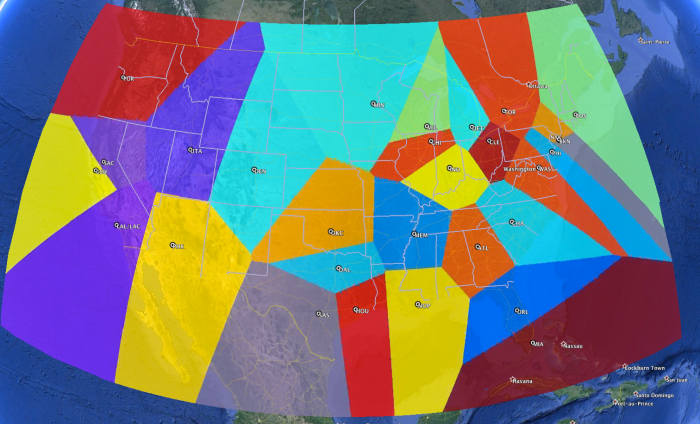Many fans of the NBA select their team based on one of four main criteria: they may have grown up in a household that was once within proximity of an NBA team; their favorite player has moved to a particular team; the team is has a history of being a winner; or they have some odd video game connection to a team. Whatever the true reason, that team makes themselves accessible to fans. To give an example, I grew up in the greater Los Angeles area in the 80’s and 90’s. Back then, the Lakers won five NBA Championships and appeared in nine NBA Finals. Needless to say I was a Lakers fan. I haven’t lived in the Los Angeles area for nearly 20 years but I manage to tune into a game or buy a ticket to a local game whenever I get the chance. The point is, locality plays a primary role in sculpting an NBA fan’s team of choice. After that, it’s up to the marketing campaigns of each NBA team to sway a fan in their direction.
In this post, we take a look at which team a particular person should be a fan of; given their proximity to that team. For instance, the 9,300+ residents of Chillicothe, Missouri find that there are no teams in their immediate region in their northeastern Missouri location. The closest teams are the Minnesota Timberwolves, Chicago Bulls, Memphis Grizzlies and Oklahoma City Thunder. Taking a closer look, we find that the center of Chillicothe is 548 kilometers from Chicago, 574 kilometers from Minneapolis, 589 kilometers from Oklahoma City, and 598 kilometers from Memphis. This would show that despite the close distances to four different NBA teams, the city should initially be a Chicago Bulls town.
Calculating this for one town is simple. We identify the city center with a latitude and longitude coordinate and measure the distance to each NBA team’s arena. This sounds simple, but it’s quite complicated. First, we note that the earth is not flat and therefore we simply cannot use subtraction of the coordinates. Next, we identify a model that represents the Earth. Using this model, we measure distances similar to that of placing a string on a map and then stretching the string out flat next to a ruler. The mathematical process for this is called “calculating a geodesic.”
A geodesic (geo-des-ick) is just a straight line on the model. A simple way to think about this is by taking an orange and drawing a straight line from top to bottom using a ballpoint pen. That’s a geodesic on the model of an orange. If the orange was a perfect sphere, the geodesic is just the arc of a circle.
Armed with the ability to draw straight lines on the surface of the Earth, we then build circles extending out from each arena. Once one team’s circle overlaps with another team’s a boundary is drawn. Continuing in this pattern from each arena, going in each direction, we obtain a color coded map identifying the closest NBA team for every location in the United States (and more!).

Map of the closest NBA team across the country. Each polygon is color coded for their respective team listed.
Here we see that the Denver Nuggets has the most number of states covered with 11: Montana, North Dakota, South Dakota, Nebraska, Wyoming, Kansas, Colorado, Oklahoma, Texas, New Mexico, and about 20 square kilometers of Utah. The Minnesota Timberwolves have the largest area covered. The Los Angeles Lakers / Los Angeles Clippers hold onto the largest population within their polygon with roughly 10% of the United States population; 31 million people in their region. This region covers all of Southern California, with exception of the 60 kilometer strip stolen by the Phoenix Suns, and over the entire Las Vegas area. This reach extends up to Fresno, which belongs to the Golden State Warriors.
What these types of maps really help with are defining potential locations for future NBA teams and identifying closest markets for distributing television and media rights. For instance, Seattle and Las Vegas have continually popped up as attempting to gain an NBA franchise. The map here shows four strong candidates for potential NBA expansion: Kansas City, Seattle, Las Vegas, and San Diego.
Of course, three of these cities have already had fledgling teams leave their region: Kansas City Kings (1972 – 1985) moved to Sacramento; San Diego Clippers (1978 – 1984) moved to Los Angeles and the San Diego Rockets (1967 – 1971) moved to Houston; and the Seattle Supersonics (1967 – 2008) moved to Oklahoma City to become the Thunder. However, Milwaukee gained the Bucks after the Hawks left in 1955; Minneapolis gained the Timberwolves after the Lakers left in 1960; New Orleans picked up the Hornets/Pelicans after the Jazz left in 1979; and the Charlotte Hornets came back into existence (via the Bobcats) after their original team left in 2002.
In our next post, we will take a look at redrawing the divisions and conferences based on proximities.
